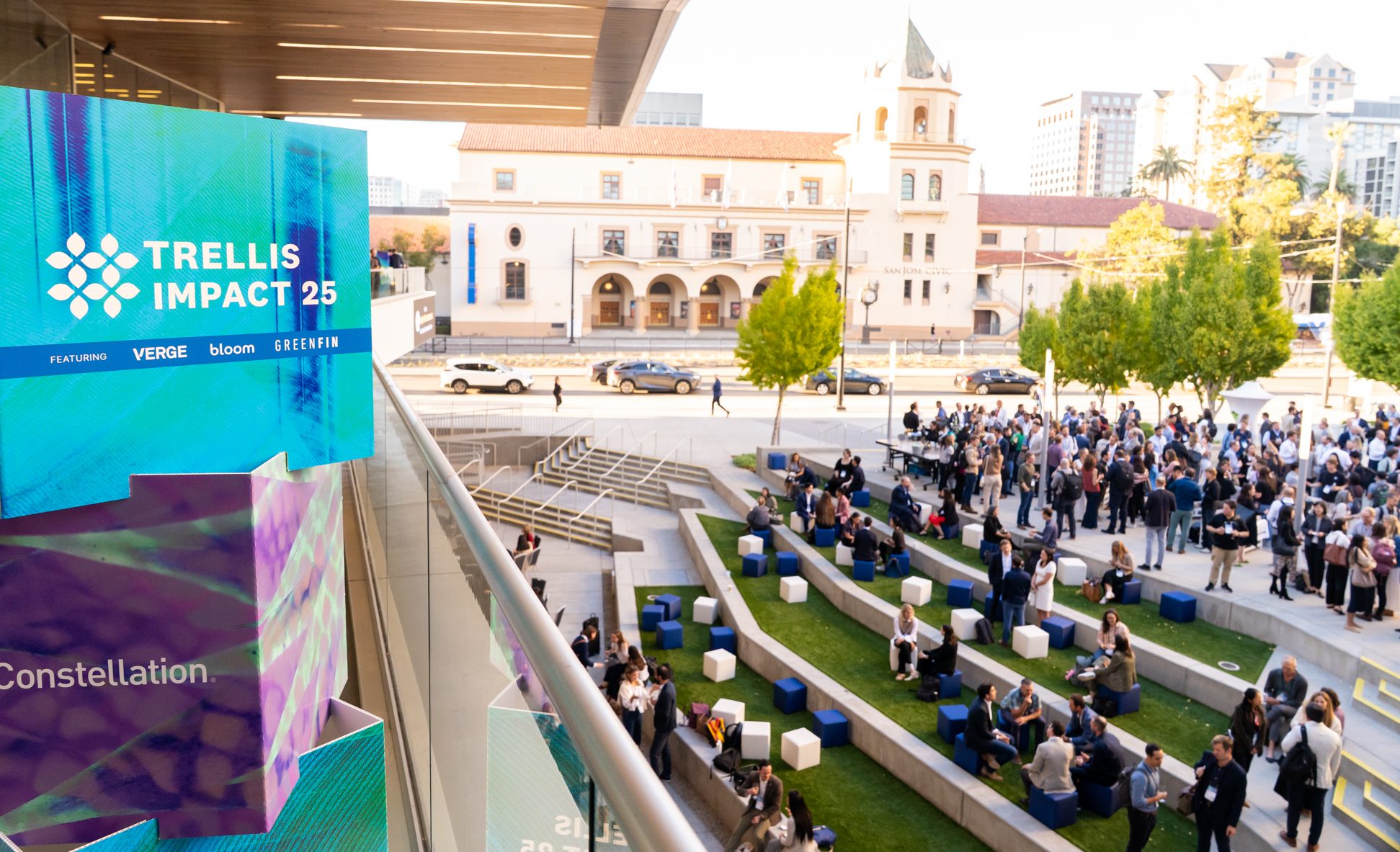
What we learned at Trellis Impact 25
Between new disclosure rules, mounting data expectations, political pushback and rapid tech change, sustainability has entered a new, more scrutinized phase. Climate work now demands a sharp discipline that ties impact to business value and financial strategy.
That pragmatism was on display at Trellis Impact 25 in San Jose, California, where sustainability leaders convened to share what’s working — and where friction remains.
One way to take the pulse of the moment is to look at which sessions drew the biggest crowds. Those would be:
- “Shaping the Future of Scope 2: Corporate GHG Strategies Amid Evolving Standards,”
- “The Next Frontier: Data Centers Powering Energy Innovation and Community Impact”
- “Catch a Falling Knife: Navigating a New Era of Renewable Energy Procurement”
Yet another way is to comb through attendees’ LinkedIn posts for key trends and takeaways. And in the spirit of “better us than you,” here’s what we found:
1. AI joins the sustainability team
That AI was a recurring subject surprised no one. It was hailed as a promising accelerator for sustainability work, from emissions accounting to data governance. Especially exciting was agentic AI, which, as one participant writes, can “analyze multiple sources of supply chain data faster and more comprehensively than ever before.”
The mood, though, wasn’t blindly bullish. Presenters cautioned against overreliance and “solutionism.” Their advice: Treat AI as an extra set of hands, not the ultimate decision maker.
2. Data is the differentiator — if it drives impact
The conference’s best-attended session focused on evolving corporate greenhouse gas strategies. But in the Scope 2 universe, greater granularity can be as burdensome as it is beneficial if the data doesn’t drive outcomes.
For example, “hourly deliverability” requirements for Scope 2 emissions are a complex standard that can overwhelm companies with limited resources without necessarily moving things forward.
3. Nature moves from margin to mainstream
Nature is emerging as a business-critical priority. Companies are adopting frameworks like those of the Taskforce on Nature-related Financial Disclosures (TNFD) and Science Based Target Network (SBTN) to measure nature-related impacts and dependencies, recognizing that protecting nature mitigates risk and improves resilience.
As one post noted, though it’s early days for most corporate nature strategies, momentum is building. Integrating nature into business strategy — by quantifying the economic benefits of agroforestry, for instance — can create value for companies and ecosystems alike.
4. Scope 3 is a teamwide endeavor
No company decarbonizes in a vacuum. Supply chains can be labyrinthian but also present opportunities for shared action.
“Activating suppliers on clean energy often means shared investment or procurement models,” one attendee wrote. Put another way, Scope 3 successes rely on building strong relationships and aligning incentives across the value chain.
5. Carbon gains ground in climate finance
Speakers framed carbon as a lure to attract capital and a lever to unlock progress.
Of particular interest were carbon offtake agreements, which create predictable cash flows and drive project financing. But their future depends on credible market demand and reliable forecasting that lets buyers plan long-term commitments.
Insurance is another enabler. “It’s critical for financing first-of-a-kind projects,” one attendee posted, emphasizing production insurance, which protects lenders if a project underdelivers.
6. Business value sustains climate action
Sustainability strategies built on business value survive shifting politics and market pressures.
“External reporting and target-setting has slowed,” noted one attendee. “But companies are continuing to invest in climate action where there is a business case around risk management and financial incentives.”
The post What we learned at Trellis Impact 25 appeared first on Trellis.





Post a comment
You must be logged in to post a comment.